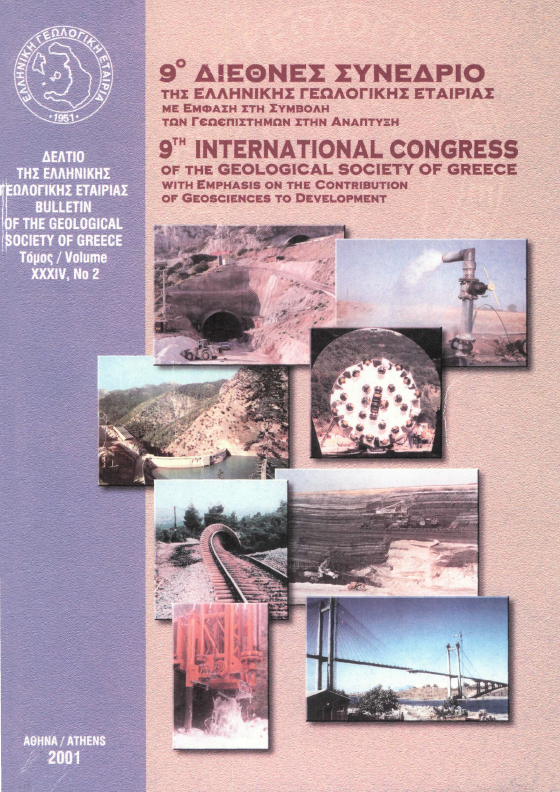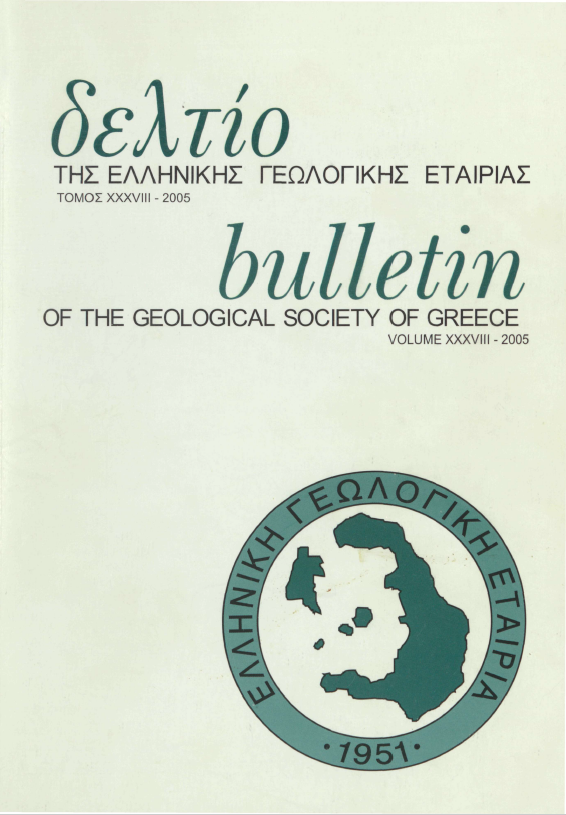Marine geological researches in the greater bay of Navarino area, Southern Ionian sea

Abstract
This paper examines the marine area of the Bay of Navarino and the Ionian sea sector to the west of the bay, based on a collection of shallow and intermediate penetration seismic profiles and on three gravity cores. The Bay has a smooth sea bottom morphology with maximum depth (75m) toward the south. Two minor reefs penetrate the sea bottom, one of them rising above the sea level forming a rocky island. In the open sea area the sea bottom is anomalous, especially after the shelf break, that is distinguished at a depth of approx. 160m. Beyond this depth deep valleys and ridges alternate and produce a rough morphology. The examination of the three gravity cores indicated that their sediment sand composition is mainly biogenic with minor amounts of terrigenous material. Increased shell fragments and terrigenous material was found at the bottom of one core taken at a depth of 116m, related probably to wave action at an earlier sea level position. The study of the seismic profiles collected within the bay and in the shelf area revealed,the presence of two distinct sedimentation units, un upper A filling with loose sediments the basins that are formed in the lower Y which is the basement. Within unit A two distinct subunits are recognized Al and A2, separated by an unconformity. In the sector to the west of the bay and beyond the shelf break, alternating opaque and transparent sediment packages are present, that are attributed to earlier sedimentation phases of low/high sea level stages. An older shelf break feature correlated with sea level stage 6 was distinguished at approx. 250m. sea depth. Thus subsidence rate in the area is estimated between 1 and 2 mm/year. The comparison of all data with the known sea level change curve indicated that unit AI was deposited during and after the latest transgression (stage 1) the unconformity between Al and A2 is related to the previous regression (stage 2), while the deposition of the unit A2 took place probably during stages 3 and/or 5. The morphology of the basement Y in the bay and the shelf area is thus attributed probably to stage 6 when the area was again subaerially exposed.
Article Details
- How to Cite
-
ΠΕΡΙΣΟΡΑΤΗΣ Κ., ΚΟΝΙΣΠΟΛΙΑΤΗΣ Ν., ΖΗΜΙΑΝΙΤΗΣ Ε., ΓΑΛΑΝΟΠΟΥΛΟΥ Σ., & ΖΑΧΑΡΑΚΗ Π. (2018). Marine geological researches in the greater bay of Navarino area, Southern Ionian sea. Bulletin of the Geological Society of Greece, 34(2), 655–662. https://doi.org/10.12681/bgsg.17125
- Section
- Marine Geology and Oceanography

This work is licensed under a Creative Commons Attribution-NonCommercial 4.0 International License.
Authors who publish with this journal agree to the following terms:
Authors retain copyright and grant the journal right of first publication with the work simultaneously licensed under a Creative Commons Attribution Non-Commercial License that allows others to share the work with an acknowledgement of the work's authorship and initial publication in this journal.
Authors are able to enter into separate, additional contractual arrangements for the non-exclusive distribution of the journal's published version of the work (e.g. post it to an institutional repository or publish it in a book), with an acknowledgement of its initial publication in this journal. Authors are permitted and encouraged to post their work online (preferably in institutional repositories or on their website) prior to and during the submission process, as it can lead to productive exchanges, as well as earlier and greater citation of published work.




